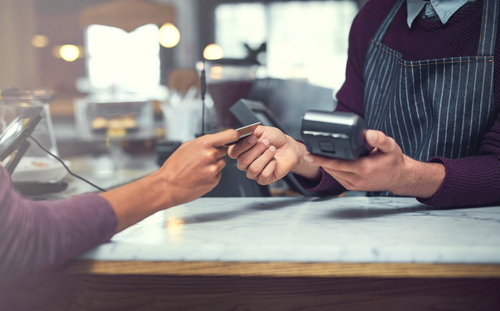La pratique du cashless
Les magasins refusant les espèces se sont multipliés ces dernières années à New York et dans d’autres grandes villes des États-Unis. Il s’agit le plus souvent d’enseignes de restauration, comme le spécialiste des salades SweetGreen, la chaîne DosToros ou encore Gotan, qui compte trois magasins à New York.
Toutes ont en commun d’exiger de leurs clients qu’ils règlent par carte bancaire ou par diverses applications de paiement mobile. Pour les commerçants, la pratique du cashless permet d’accélérer les transactions et d’accroître leurs recettes. Les consommateurs étant de moins en moins nombreux à payer en espèces, il s’avérait parfois plus rentable pour ces enseignes de supprimer un poste consacré à la gestion de l’argent liquide, à savoir son comptage, son enregistrement et son dépôt à la banque.
Certaines d'entre elles ont également mis en place un dispositif permettant au client de laisser un pourboire directement via sa carte ou son application de paiement mobile. Un système plus transparent pour les patrons, qui y voient une simplification de la comptabilité.
Le géant Amazon prévoirait l’ouverture de 3 000 magasins sans espèces Go Stores d’ici à 2021 dans tous les États-Unis. Dans ces épiceries, les clients n’ont pas besoin de régler leurs achats sur place : ils sont débités automatiquement lors de leur sortie, via un dispositif ultra-moderne de caméras et de capteurs.
Une pratique discriminante pour les populations sous-bancarisées
Toutefois à Philadelphie, San Francisco et dans l’État du New Jersey, Amazon Go a dû revoir sa copie et est désormais dans l’obligation légale d’accepter les espèces. Le procédé est néanmoins loin d’être simple pour le consommateur, qui doit à son arrivée contacter un responsable, choisir ses produits et régler à la caisse prévue à cet effet, le tout en étant accompagné d’un vendeur.
Pour interdire la pratique du cashless, les villes de Philadelphie et San Francisco ainsi que l’État du New Jersey se sont appuyés sur la loi fédérale donnant cours légal aux pièces et aux billets.
À New York, la proposition de loi a été approuvée par une majorité écrasante de voix, soit 43 contre 3. Sa mise en application ne nécessite plus que l’aval du maire, Bill de Blasio, qui s’était déjà prononcé en faveur de cette intention de loi avant son vote.
L’objectif est d’éviter une pratique discriminante pour les personnes ne disposant ni compte bancaire ni carte de crédit. Aux États-Unis, 14 millions d’adultes ne possèdent pas de compte bancaire, soit 6,5 % des ménages américains. Il s’agit le plus souvent des populations les plus défavorisées, notamment les minorités.
Par ailleurs, le paiement en espèces aux États-Unis représente encore 49 % des transactions de moins de 10 dollars. L’enseigne SweetGreen a déjà fait marche arrière face aux critiques.
